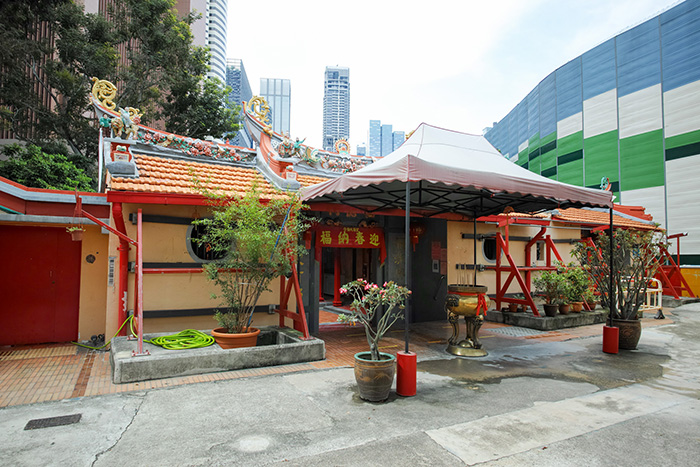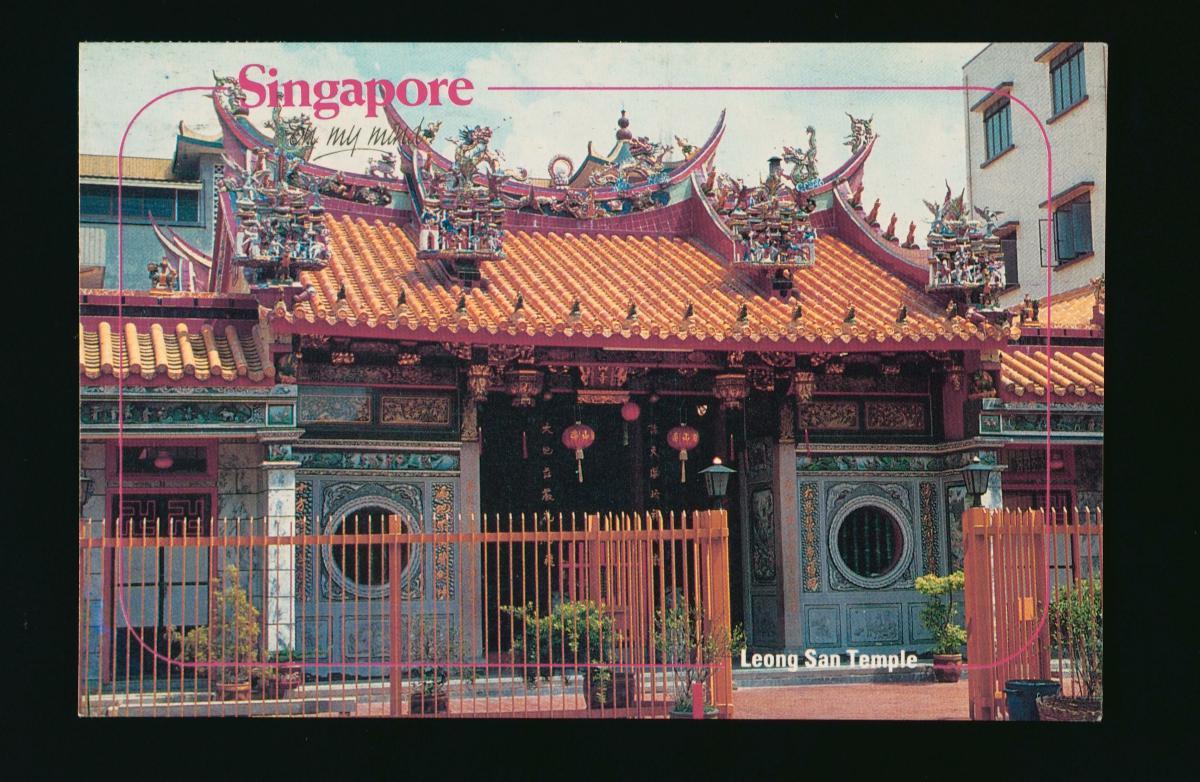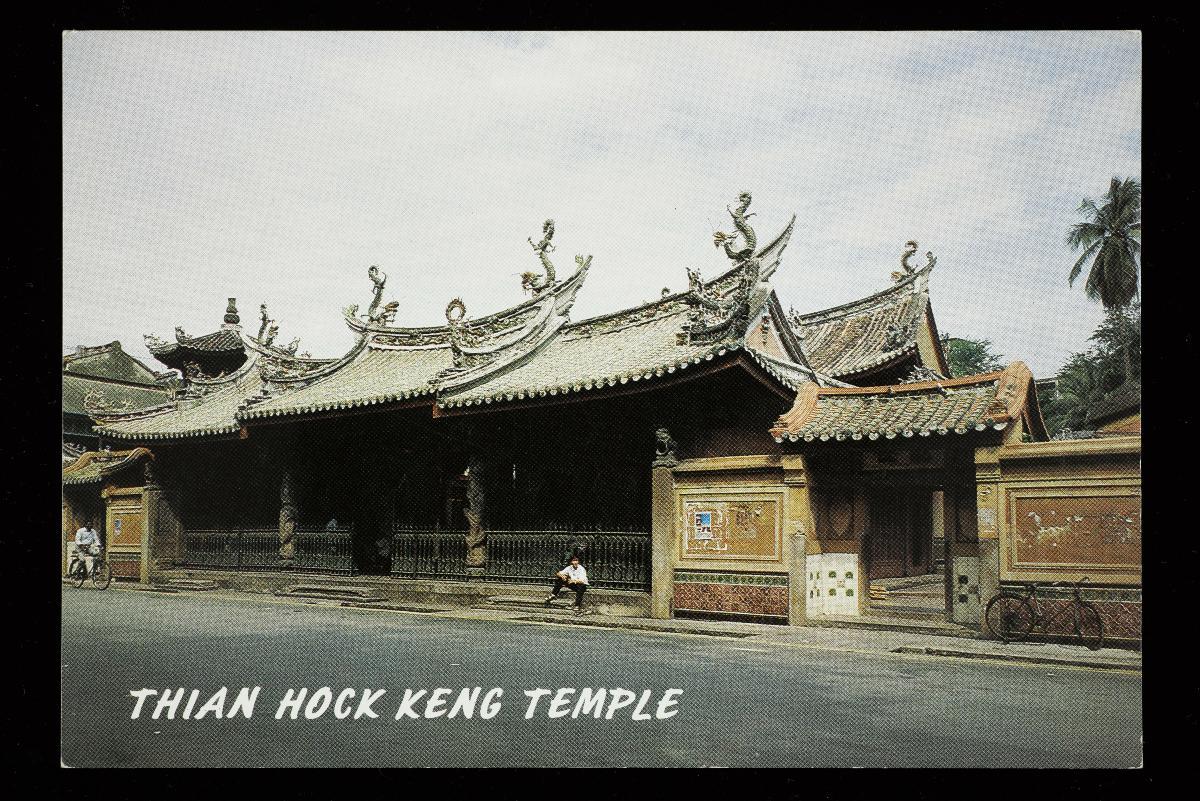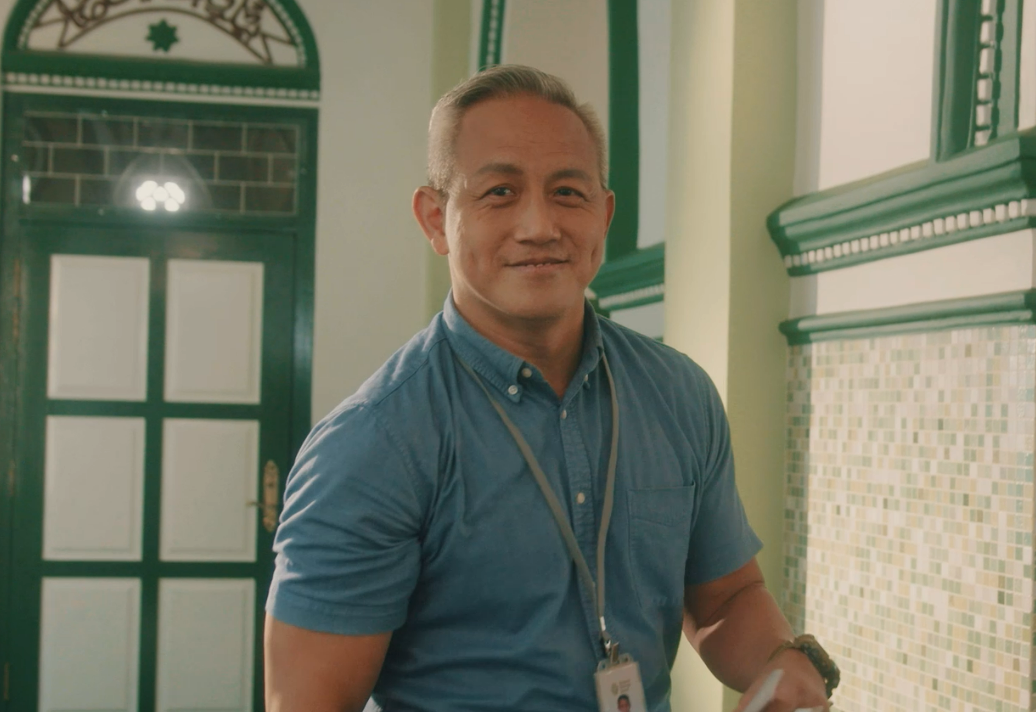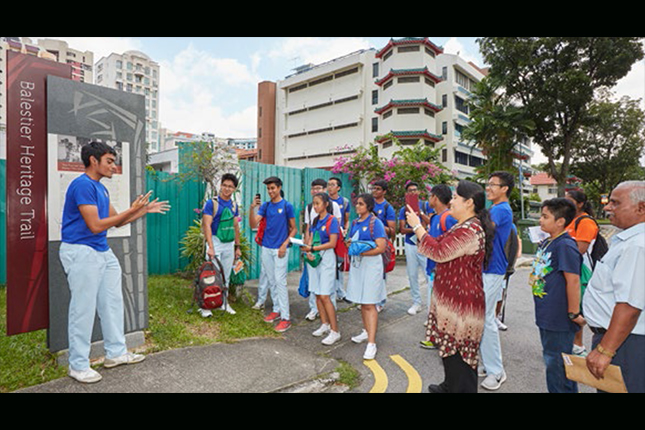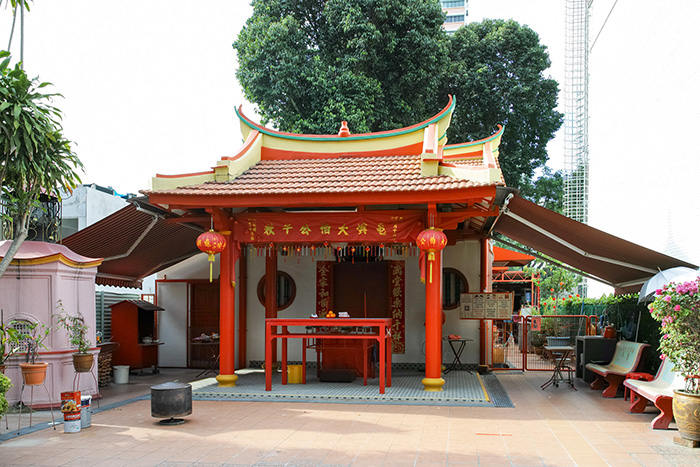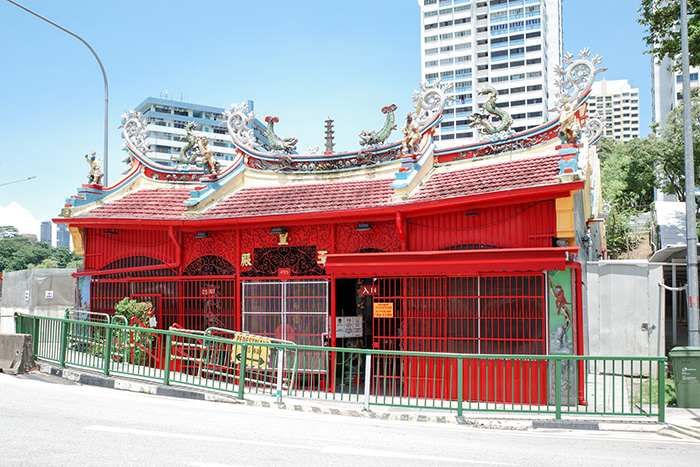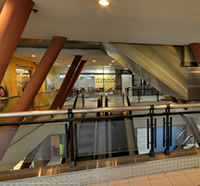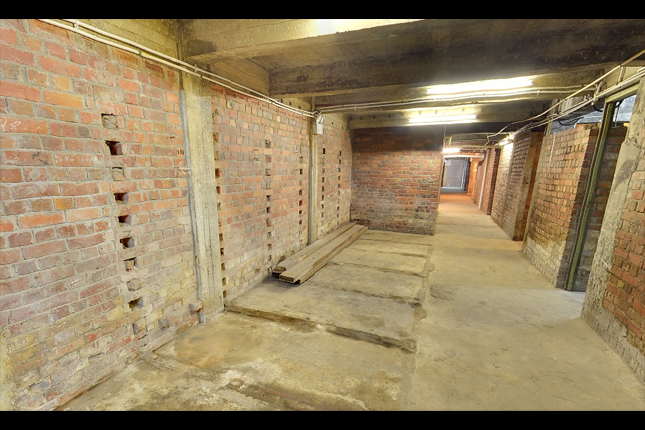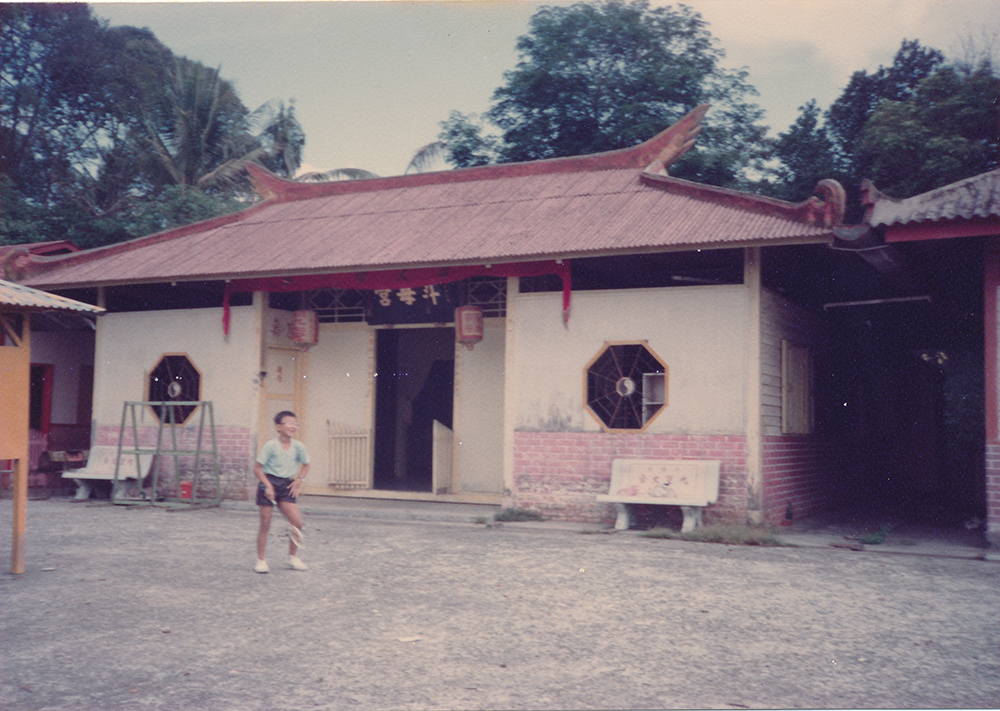Hock Teck See Temple was said to be built in 1844 and it is believed to be the oldest Chinese Hakka temple in Singapore. The site of the temple was marked as a “Joss Ho (House)” in John Turnbull Thomson’s map dated 1846. Some scholars go as far to argue that the temple has existed before the arrival of Sir Stamford Raffles in 1819.
The temple’s location at Palmer Road was said to be selected according to fengshui (Chinese geomancy) principles. It was regarded as an auspicious site in the past as it was backed by Mount Palmer and believed to have a sea-fronting view, prior to land reclamation works.
Features and ornamentations
Despite being a Hakka temple, Teochew craftsmen were supposedly involved in its construction. The influence of the Teochew craftsmen is reflected in the Teochew decorative style of the temple’s roof.
Jian Nian (剪黏)—porcelain cut and paste shard work—was used to craft Chinese motifs such as “phoenix greeting peony” and “blazing pearl” in Teochew style, as well as floral images and even elephants.
The temple also sees the use of cockle shells to decorate the Juan Cao Wen (卷草纹) or plant-scrolls, which are found at the end of the roof ridges. This may be the only existing example of such an ornamentation in Singapore.
Various couplets could also be found in the temple, with the earliest couplet dated back to the 1850s. Interestingly, it is said that the couplets carry encoded messages that only a few can decipher. These poetically styled couplets may be describing the whole temple, or specific sections such as its shrines or prayer halls. These messages may reveal much about the temple’s history, its people and other possible information that is yet to be uncovered.
Discovery of 19th and 20th century artefacts
To date, Hock Teck See Temple has undergone two major renovations: once in 1861 and another time in 1970. The 1861 renovation was funded by donors from pawnshops, Chinese medical halls and associations, like Ying He and Feng Yong Da Company (now known as Ying Fo Fui Kun and Fong Yun Thai Association). The renovation was commemorated and recorded in three sandstone steles, which can be found in the temple. By the 1970s, the temple had been weathered by age and war, and was rejuvenated again in a $36,000 project.
In January 2006, temple trustees also sponsored an archaeological initiative to examine the compound and its surrounding areas. The excavation discovered items such as 19th and 20th century ceramics and glassware, and World War II artefacts left behind by the Japanese and British.
Hock Teck See Temple is more than a place of worship. It is a historically valuable site that reflects the rich history and culture of Singapore.
Buildings and sites featured on Roots.gov.sg are part of our efforts to raise awareness of our heritage; a listing on Roots.gov.sg does not imply any form of preservation or conservation status, unless it is mentioned in the article. The information in this article is valid as of March 2020 and is not intended to be an exhaustive history of the site/building.




